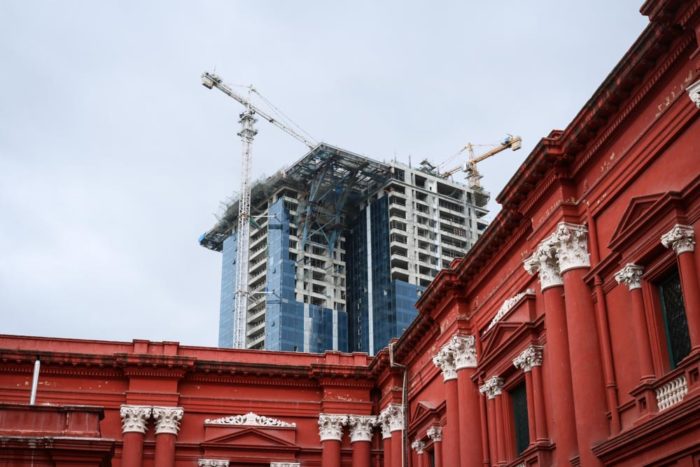
If you’ve lived in Seattle over the past couple decades, you’ve watched it turn from a grungy working-class backwater into a worldwide tech capital.
You’ve watched Amazon grow until it occupied its 10 million square feet of office space downtown. You’ve read national media reports claiming the company has “colonized,” or “swallowed,” or “eaten” the city. And you’ve undoubtedly witnessed some hostility between tech transplants and “true Seattleites.”
So I was intrigued when I found out I’d be spending three months in Bangalore, India (or Bengaluru as it’s formally known). The south Indian city traded the moniker “The Garden City” for “The Silicon Valley of India” when tech companies set up shop and attracted millions of migrants.
I thought, what similarities there must be; two cities on opposite sides of the globe, at the center of a worldwide tech-boom, for better or worse.
Then I actually showed up in India.
Seattle and Bangalore definitely share some issues like traffic jams, housing shortages, and a perceived loss of cultural heritage. But when it comes down to who bore the brunt of the tech-boom, India takes the cake.
From 2001 to 2011 Seattle’s population grew about eight percent; “healthy” growth for an American city. Even when Seattle was touted as the fastest growing city in the U.S. between 2012 and 2013, it only grew 2.8 percent.
Meanwhile, from 2001 to 2011, Bangalore’s population grew a staggering 47 percent, and the city became nearly twice as dense.
Both cities have experienced a lot of tech-driven growth, just on different scales. It makes sense each city would deal with the problems that come with a tech boom in different ways as well.
“The history is almost consciously being forgotten”
Whitefield, a former Anglo-Indian settlement-turned home of the International Tech Park, is about 45 minutes away from Bangalore’s city center. It’s kind of the Bellevue of Bangalore.
Texas Instruments built the first software design center there in 1985, about the time Microsoft was settling into its campus in Redmond. Several other multinational companies followed. In the blink of an eye, this sleepy, family suburb was the center of the tech-park culture boom in Bangalore.
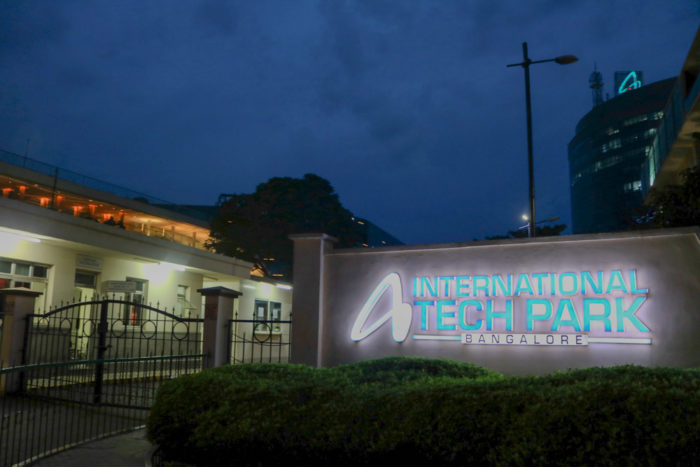
One longtime Whitefield resident who didn’t want to share his name (maybe because he’s an employee of an American company with a base in Whitefield) says that once Texas Instruments arrived, there was no looking back.
“Whitefield epitomizes what has gone wrong with Bangalore,” he said during the tour he took me on of his neighborhood, proudly pointing out the surviving colonial-era bungalows. “Bangalore was a very charming place and it was the best city in India in many ways… But let me say, in 20 years the real charm of Bangalore is gone.”
The tour of Whitefield took us to The Waverly, a 19th century bungalow that used to be an inn where, according to locals, Winston Churchill once stayed and courted the inn-keeper’s daughter.
Today, the house is owned by a man named Vivian D’Souza. Despite its age, beauty and historical importance, it is not a protected landmark. That means D’Souza has to maintain the large property with no help from the government. He said he has thought seriously about leaving, but having lived in Whitefield for 40 years, he doesn’t know where else to go.
“That is the price we have paid for progress,” D’Souza said. “It is no longer what it used to be. Whitefield used to be one big family in the old days. Everybody knew everybody. Nowadays nobody interacts with one another.”
Krupa Rajangam, a lead researcher at the Bangalore-based architecture firm Saythu, took it upon herself to document the unique histories of Bangalore’s neighborhoods and historical spots like The Waverly. In 2009, she started the Neighborhood Diaries visiting several neighborhoods throughout Bangalore and recording oral histories with residents. She learned that fear of the city’s culture being corroded is not unique to Whitefield.
“What is happening in each of these neighborhoods kind of represents the crisis in Bangalore – that it clearly has no cultural heritage or identity,” Rajangam said. “Every place looks like every other place, which is not a comfortable feeling…The history is almost consciously being forgotten.”
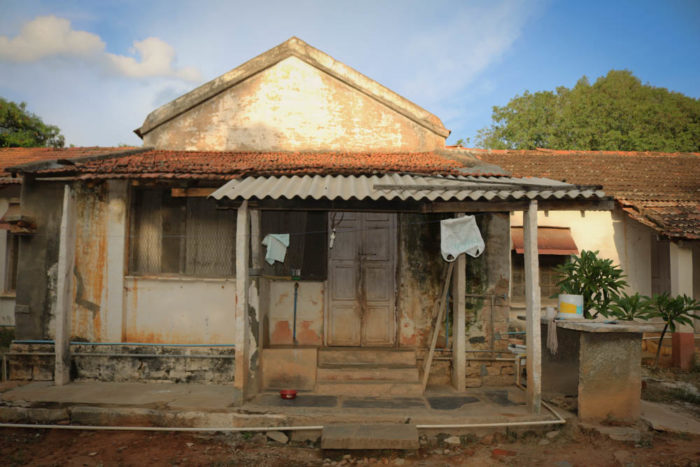
Nostalgia for the past is something Seattle and Bangalore have in common.
Much like the Neighborhood Diaries, Seattleite Jaimee Garbacik created Ghosts of Seattle Past, a “collaborative map of places loved and missed in a rapidly evolving city.”
She said the purpose of the project is to share, to feel heard and to tell stories.
“You can’t stop progress and development, change and growth, but we can make art about our memories,” Garbacik said in an email. “We can tell stories and sing songs about what was once here, write books and make sure Old Seattle is not forgotten.”
“They want to be like Singapore”
Both cities are trying to protect their collective memory. A key difference is who citizens blame for it being threatened in the first place.
In Bangalore, you’ll rarely hear a kind word for the city government.
Rajangam said instead of focusing efforts on preserving heritage, or even improving infrastructure, many in positions of power are caught up in the Silicon Valley effect and just keep inviting new companies to Bangalore.
“They want to be like Singapore,” Rajangam said. “They see all of this cultural stuff [as] in the past, that [it] needs to be left behind.”
Even when companies are willing to help the government with its needed infrastructure overhaul, little progress is made.
Mike Holland, CEO of Embassy Office Parks, said his company would be willing to put down $11 million USD if the government would build a flyover to ease techies commutes.
From the article in Indian online newspaper Mint:
“Perhaps the best symbol for Bengaluru’s neglected urban infrastructure is an eight-lane flyover project meant to connect West Bengaluru to the rest of the city. It has been in the making for the last eight years, and, even as the cost escalated…all that has been made for the Okalipuram flyover is just two pillars — that too half built.”
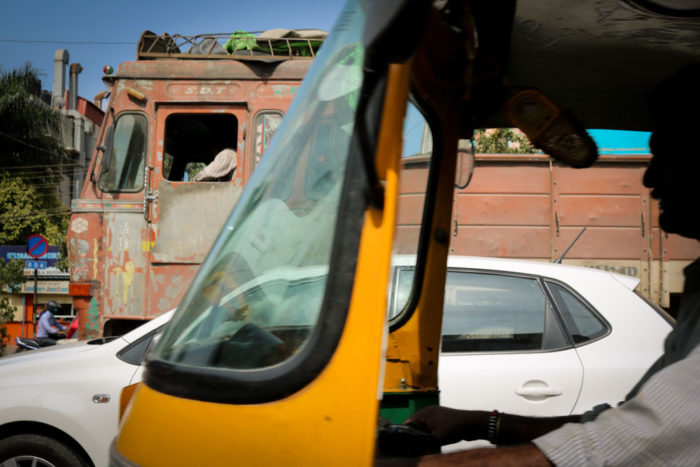
The problems created by the population boom in Bangalore are beyond most Seattleite’s worst nightmares. There’s increasing worries over the water shortage. Sewage management is non-existent in many places. There’s pollution in the air and lakes and an excess of garbage without the proper mechanisms to dispose of it. Trees are cut indiscriminately to make room for construction. Traffic congestion (no, not like Seattle traffic) makes for absolutely insane commutes. And for the 40 percent who called Bengaluru home long before the tech-invasion, there’s a general longing for what the city used to be.
Infrastructure in Bangalore has not kept up with the growth, the government has remained myopic and citizens are paying the price.
“I came here to get away from you”
Anti-transplant rhetoric is something I’ve become accustomed to having grown up in Seattle, so I expected to hear it in Bangalore as well. After all, the city’s population has nearly doubled to over 11 million in the last 15 years.
But locals don’t blame the arrivals for the painful repercussions of this uncontrolled population growth. The idea that the tech companies and all they represent are evil just isn’t pervasive here as it is in Seattle.
“One has to be pragmatic about these things. What is the point of saying migrants have come into a city and ruined it?” said Maureen Gonsalves, cultural programmes coordinator at the Goethe-Institut and a Bangalore resident since 1980. “It is a fact of life. We have to work around it, integrate them into our city and our culture and make them part of it.”
On the contrary, it isn’t uncommon in Seattle for someone to vocally blame a techie for “ruining Seattle.” Prominent street art reads “We came here to get away from you,” among other less-than-friendly messages to techies and tech companies. You can even buy gear with the phrase “Keep Seattle Hostile.” (I’ll admit it — I have that sticker on my laptop.)
In Seattle it’s cool to be unfriendly to newcomers, and if anyone is going to get the worst of the “Seattle freeze,” it’s going to be tech-transplants.
In Bangalore, the general response to my questions about feelings toward tech-migrants were warm. They said they welcome the talent, despite the damage the influx of people may have caused.
Then again, the biggest problems in Bangalore come from a lack of infrastructure. Whereas in Seattle, our biggest growth-related issue may be a shortage of affordable housing. Compared to Bangalore, the city had basic infrastructure covered when the population began to increase.
Arguably, the Seattle city government had done its job right. So, who else is left to blame for the changes in the city other than the techies themselves?
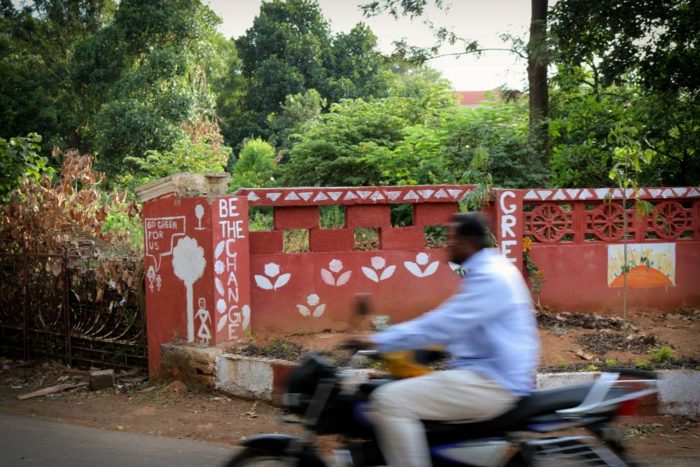
“The local press and culture has just accepted as fact that new jobs have all kinds of negative impacts, including hate crimes,” Roger Valdez said in an email, director of Smart Growth Seattle. “This kind of progressive xenophobia is what I would consider to be the unfortunate consequence of new people; but it’s not the fault of new people coming here, but the people already here who are resentful of new people coming here for jobs.”
Still, data doesn’t lie. Seattle is one of the fastest gentrifying cities in the U.S. Grist ranked it #4 last year, with 50 percent of eligible neighborhoods already gentrified. Capitol Hill and 23rd Avenue in the Central District have come to represent the “g-word” — both were home to marginalized communities and are now hotspots for expensive apartments only a software engineer could afford.
Seattle is in a tough spot; the city has to build more housing to accommodate the population, but they are up against crowds of anti-development folk. Some see any development as gentrification or as a deterioration of the beloved Seattle culture, and others don’t want to see any development at all — the NIMBYs (not in my backyard) of the world.
Valdez said Seattleites shouldn’t waste time and energy worrying about preserving neighborhood character when there are bigger issues at hand.
“Neighborhood character can’t be “preserved” like a mummy or strawberries from grandma’s garden,” Valdez said. “We may not like the way a neighborhood feels now compared to the way it felt 20 years ago. The point is change happens, it is inevitable and it makes no sense to try and stop it. Instead, allowing more housing, even when it appreciably changes character, is the sure way to keep all neighborhood accessible to people of all incomes.”
Garbacik touched on this as well:
“I think it’s a misnomer to think that the vibe you ascribe to your city is in any way universal,” she said. “A city is experienced in a lot of different ways by its inhabitants, and while that’s ever-evolving, there isn’t one static culture that we once had and have now lost.”
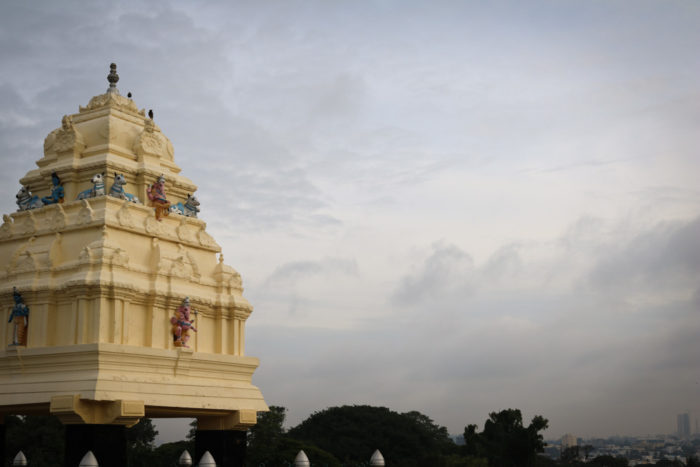
“Seattle is a teenager”
These two cities, where software engineers are as ubiquitous as Starbucks (or the Bangalore equivalent, Cafe Coffee Day), have their very real problems. But take every Seattle problem, multiply it by 10, add seven million more people, and a spoonful of corruption, and you’ll get an idea of what Bangaloreans are dealing with.
Both cities are at a crossroads.
There’s no telling how long Bangalore can maintain its reputation as the “IT City” with such struggling infrastructure. Recently, Sid Arora of The Diplomat wrote that other Indian cities are catching up and may be more appealing to multinational investors. He argued less pressure on Bangalore to be the Indian tech city might be good for its residents, lessening the traffic, giving more time to improve the infrastructure and allowing the city to develop its own identity separate from tech.
For Seattle, tech is probably a permanent fixture. Our challenge is to continue to merge, if possible, our dichotomous populations. It’s time to accept the hoodie-clad techies as our own and create a city that belongs to both populations. If we continue to humor this us vs.them, “tech is evil” narrative, we may find ourselves living in a city that’s entirely divided.
“Seattle is a teenager, a growing but currently awkward city whose limbs and reach are longer than its spatial awareness can keep up with,” Garbacik said. “It hasn’t fully formed its identity yet, nor figured out how to be accountable and responsible to everyone around it.”


In bangalore, it is hard to find a localite. You may have come across people who have stayed here for 40 years claiming to be a localite when they can’t even speak the local language or understand the local culture.
So in their opinion they don’t blame the immigrants for ruining bangalore, because they themselves are outsiders. But if you ask a genuine localite (genes from Karnataka) then you will realise that the opinion is absolutely no
different from Seattle. We blame the Outsiders, Tech Companies, Govt and Ourselves for this current situation in Bangalore. The genuine locals are a minority in bangalore now, we only blame but don’t do anything about it
because at the end of the day we know that people come here to earn their daily bread, we simply cannot discriminate and everyone has the right to live.
Well written article, and as a Bangalorean, there is a lot to learn from Seattle. Also, one of the reasons Bangaloreans are not hostile towards the influx is that, the influx is perhaps what we needed as well. I agree with the previous comment that the really local population (the Kannadigas) who are in a minority do resent the influx. But there are several who see this as a welcome relief. Bangalore may have lost its heritage — but then the immediate heritage had a split, painful personality. There was the colonial “Bangalore” and the local “Bengaluru” which were both sharply divided. I am sure very few local Bengaluru folks have heard of that “heritage” place where Winston Churchill stayed (I even forgot the name). For the Bengalurueans, heritage is about the different temples, lakes, forts, etc. There was a deep social chasm between the cantonment and Whitefield areas with its colonial past and the western and southern areas (Malleshwaram, Rajajinagar, Basavanagudi) which predominantly comprised of the local “Pete” population. The 47% growth and the large influx is somewhat like as though someone has filled this chasm with earth and run a road roller over it. It has been a great leveler in terms of access to opportunities and social upliftment. Yes, there are problems with traffic, water, garbage disposal etc. But morale and spirits (including the alcoholic variety) are also high, especially among the younger generation, with the new found opportunities.
Hi there Kate, its not a Hindu temple by the way.It’s a watch tower, one of many in the region, said to have been built by Kempegowda, the chieftain who created the settlement of Bengaluru in the 16th century.It was a outpost for sentries, located at a vantage point. Not a sacred space.
Thanks @historybuff ! That was my (editor’s) error, not Kate’s. I updated the caption with the info you provided.